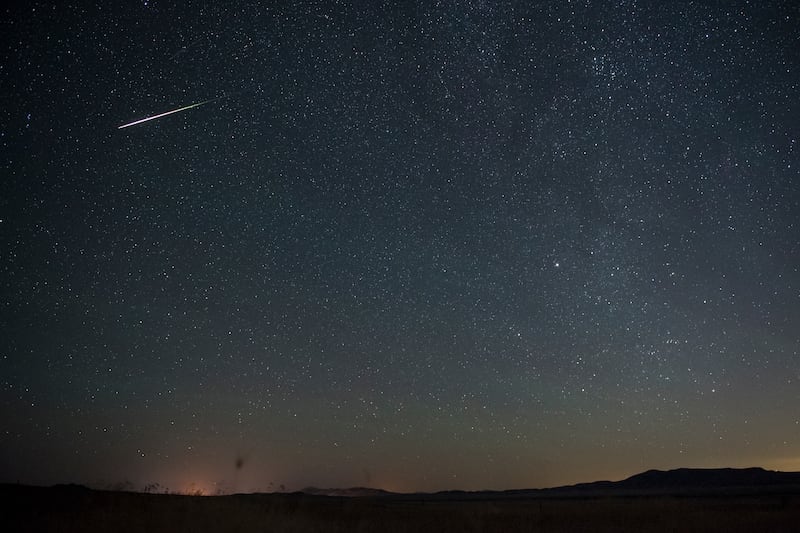Tuesday night into Wednesday morning will be the best time to view the Perseid meteor shower as it reaches its peak.
The meteor shower is known for producing dozens of bright meteors which leave long streaks in their wake, per CNN.
About the Perseid meteor shower
According to ABC News, the Perseids are caused by the Earth traveling through trails of debris left behind by Comet Swift-Tuttle.
The meteor shower is active every year between mid-July and late-August, but Tuesday night will be the best time to view the shower.
“The Perseids are known for producing consistent meteors and occasional fireballs — ‘shooting stars’ that blaze more brightly than Venus in the sky,” according to Space.com. “The Perseids peak as Earth passes through the densest and dustiest area of the comet’s trail.”
This meteor shower has been drawing attention from people ever since it was first recorded by Chinese astronomers nearly 2,000 years ago in 36 A.D., per ABC News. It gets its name because it appears as though the meteors shoot out from near the Perseus constellation.
The best time to view the Perseids
According to Space.com, the best time to view the meteor shower is between 3 and 4 a.m. local time.
Those watching in person should find a dark spot away from city lights with a wide view of the sky. It is also recommended for people to allow around 30 minutes for their eyes to adjust to the dark.
The Perseids are visible to the naked eye, so telescopes and binoculars are not needed.
Light from the moon will impact viewing of the meteor shower. In previous years it produced around 40-50 visible meteors per hour but because it is so soon after a full moon people may see around 10 to 20 meteors per hour, per CNN.
Upcoming meteor showers
Here is a list of peak dates of other meteor showers that are anticipated through the end of 2025, according to Earthsky and the American Meteor Society:
- Draconids: Oct. 8-9
- Orionids: Oct. 22-23
- Southern Taurids: Nov. 3-4
- Northern Taurids: Nov. 8-9
- Leonids: Nov. 16-17
- Geminids: Dec. 13-14
- Ursids: Dec. 21-22


